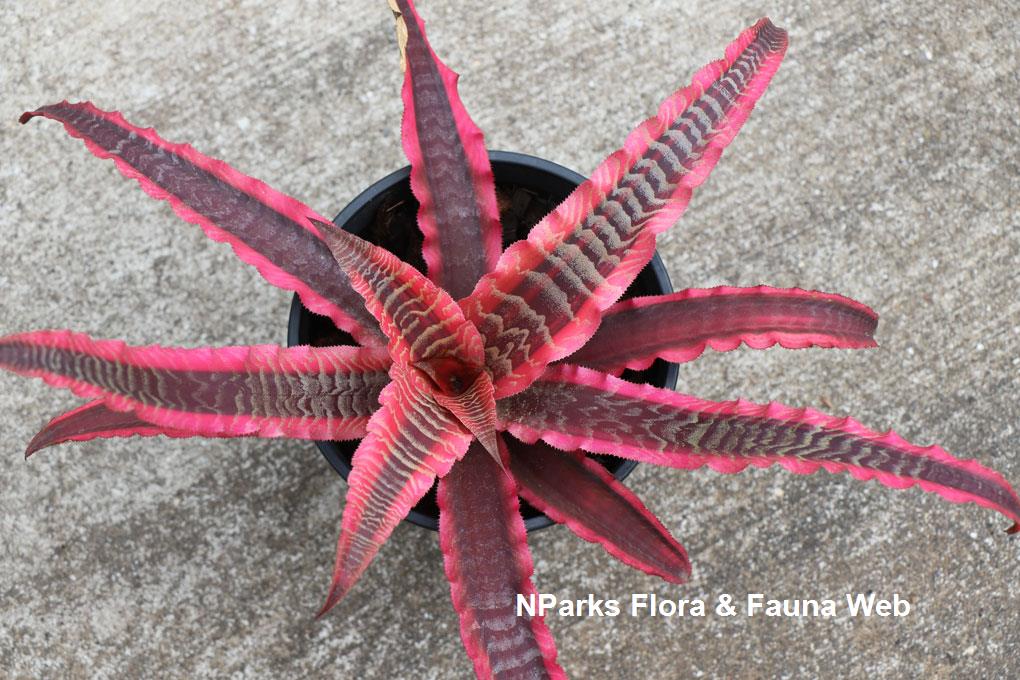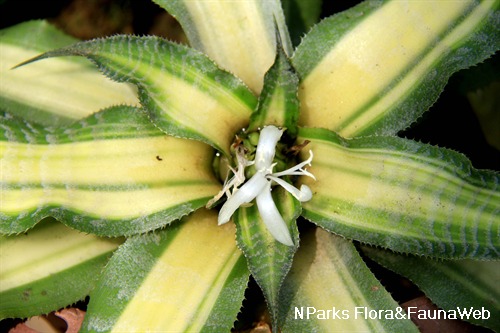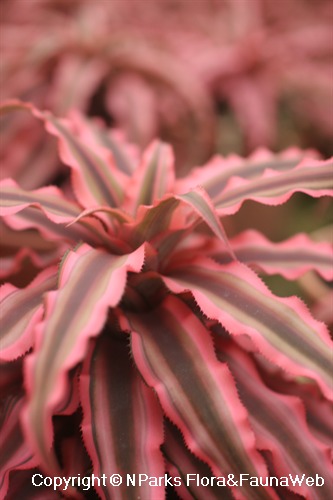
Back
Cryptanthus bivittatus 'Pink Starlite'
| Family Name: | Bromeliaceae |
| Common Name: | Pink Starlite Earth Star, Pink Starlite Starfish Plant |
Name
Classifications and Characteristics
| Plant Division | Angiosperms (Flowering Seed Plants) (Monocotyledon) |
|---|---|
| Plant Growth Form | Shrub |
| Mode of Nutrition | Autotrophic |
| Maximum Height | 0.2 m |
Description and Ethnobotany
| Growth Form | A spectacular, slow-growing, star-like-shaped bromeliad with striking streaks of suffused green and pink on its elliptic foliage that arch downward in a rosette shape and grows horizontally and low to the ground. |
|---|---|
| Foliage | Leaves spirally-arranged in a flattish rosette, stiff, elongated and lanceolate (lance head-shaped), narrow, up to 15 cm long, with undulated and serrated margins, bending backwards towards the tips, variegated with longitudinal stripes ranging from various shades of pink, red, to crimson or maroon, white to cream and light green to dark olive-green, with ash-grey undersides |
| Flowers | Flowers clustering, inconspicuous, white, nestled low in the centre of the rosette; petals 3. |
| Cultivation | Almost a hassle-free plant, it requires minimum care and grows easily under light conditions ranging from bright light indoors to strong filtered light outdoors. Strong, full sun should be avoided as extreme sunlight causes bleaching. The tones of the vibrant colours displayed on its foliage depends on the light intensity, with low to medium light making the colours on the leaves dull and less vibrant, and strong bright light for best foliage colour. It prefers a humid environment and a moist, rich and well-drained soil. Moderately drought tolerant once established. It is generally free from pests or diseases. Propagate from offsets or pups that appear from the leaf axils or at the base of the parent plant. A pup can be removed by giving a slight tug when they are at least one-third the size of the mother plant, and then insert the bottom stem tip into potting soil firmly. It should root easily under warm conditions. Caution: Plant has spiny, serrated leaf margins which requires care when handling. |
| Etymology | The genus epithet 'Cryptanthus' comes from the Latin word 'crypt', meaning 'hidden', and the Greek word 'anthos', meaning 'flowers', in reference to the small, inconspicuous flowers. It is, however, rather misleading as the small, white flowers are far from hidden by perching in the midle of a relatively flat plant. the species epithet 'bivittatus' comes from Latin words 'bi', meaning '2' and 'vittatus', meaning 'banded', in reference to the 2-banded foliage evident in the species. |
Landscaping Features
| Desirable Plant Features | Ornamental Foliage, Ornamental Form |
|---|---|
| Landscape Uses | Container Planting |
Plant Care and Propagation
| Light Preference | Semi-Shade |
|---|---|
| Water Preference | Moderate Water |
| Rootzone Tolerance | Well-Drained Soils |
Foliar
| Mature Foliage Colour(s) | Green, Pink |
|---|
Floral (Angiosperm)
| Flower Colour(s) | White |
|---|
Image Repository
Others
| Master ID | 29566 |
|---|---|
| Species ID | 3875 |
| Flora Disclaimer | The information in this website has been compiled from reliable sources, such as reference works on medicinal plants. It is not a substitute for medical advice or treatment and NParks does not purport to provide any medical advice. Readers should always consult his/her physician before using or consuming a plant for medicinal purposes. |

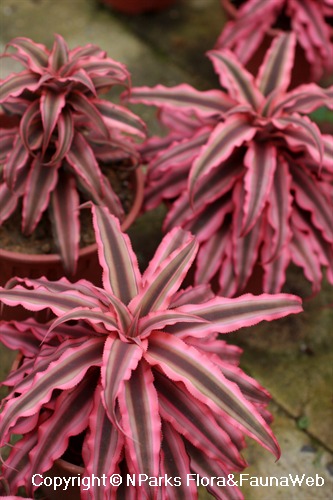
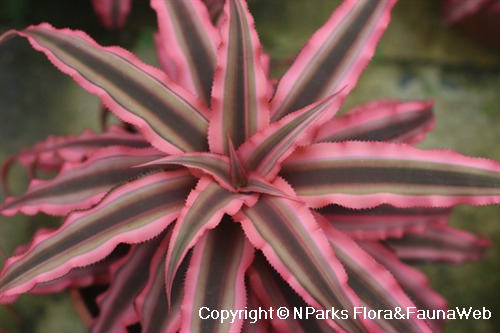
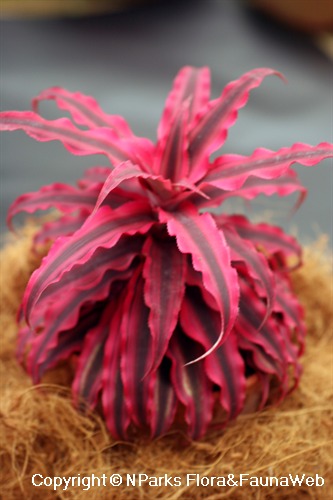
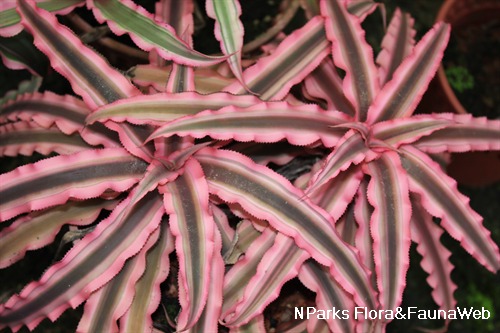
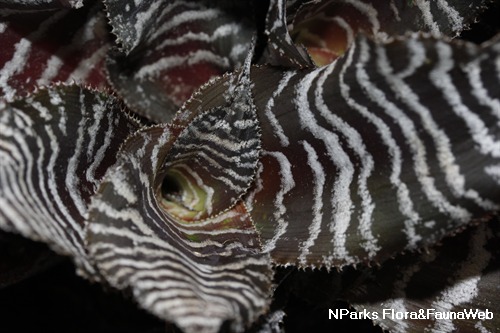
.jpg)
